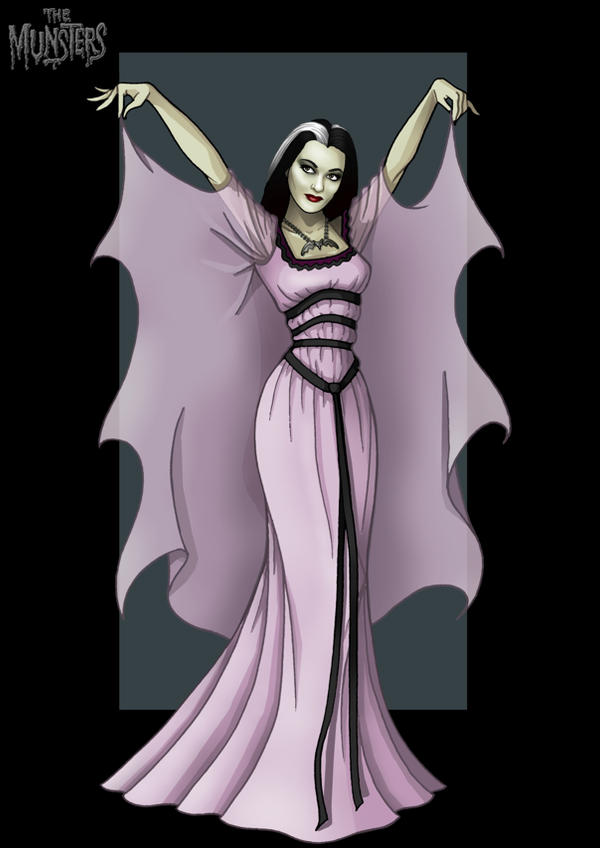According to Dr. Stephen Flowers, in short, the word Rûna means “seek the mysteries.” I would suggest to anyone interested, to google "dr stephen flowers runa" and you can find numerous lectures that go into detail about Rûna. I've already posted some of that. I'm going to look at just a few different observations and possible connections. The word and concept is of Teutonic or Proto-European origin, from northern Europe but adopted into words of languages across the rest of Europe. Although possibly it may have developed on its own--but from the same basic root word--via the Proto-European languages in several of those regions over time. Within any practical study of history and language, we would call it of Teutonic origin.
*************************
From thaliatook.com
Idun, Norse Goddess of Youth, Immortality, and Beauty from the World Goddess Oracle by Thalia Took.
Nova Luna Center
Idun, Norse Goddess of Youth and Immortality by Thalia Took Idun ("She Who Renews") is the Norse Goddess of youth Who grows the magic apples of immortality that keep the Gods young. Her husband Bragi is God of poetry.
************
Excerpt from 'Guido von List: Part 1'
During the years 1888–1899 List was involved with two important literary associations. In May 1891 Iduna, which had the descriptive subtitle of "Free German Society for Literature", was founded by a circle of writers around Fritz Lemmermayer. Lemmermayer acted as a sort of "middle man" between an older generation of authors (which included Fercher von Steinwand, Joseph Tandler, Auguste Hyrtl, Ludwig von Mertens, and Josephone von Knorr) and a group of younger writers and thinkers (which included Rudolf Steiner, Marie Eugenie delle Grazie, and Karl Maria Heidt). The name Iduna was provided by List himself and is that of a North Germanic goddess of eternal youth and renewal. Richard von Kralik and Joseph Kalasanz Poestion, authors with specifically neo-Germanic leanings, were also involved in the circle.
*************************
KHPR: The Voice of Darkness
KHPR 004: Dr. Stephen Flowers on Runa
Dec. 23, 2009
ABOUT THIS EPISODE
Today we are taking a bit of a different turn. Instead of an interview, KHPR is presenting a lecture by Dr. Stephen Flowers an Ipssisimus of the Temple of Set and the Magus who uttered the word Runa, which means “seek the mysteries.” Dr. Flowers gave this lecture at the recent Conclave held in Austin, Texas and is an accomplished writer of over twenty books on Runa and related subjects.
In 1980 he founded the Rune-Gild, the world’s largest and most influential initiatory organization dedicated to Rune-Work and the Odian path. For more information on Dr. Flowers work you can visit his community website at www.edred.net. Dr. Flowers also hosts the thrice weekly Radio Free Runa podcast on this site.
As always you can email us at radams@khprvod.org or via skype at KHPRshow and follow us on Twitter @KHPRvod. You can also sign up to receive an email whenever a new show or post is put up. Just use the subscription form to the right which includes an opt-in ability so that no one can sign you up without your knowing about it.
*************************
Rune and Runa
Is there a connection between these words, what they symbolize, or even male and female symbolism? For starters, Rune (male) and Runa (female) are indeed given names in Scandinavia. Rune is a masculine given name derived from the Old Norse word rún, meaning "secret." It is earliest attested in a runestone as runi. That's really interesting just in of itself, and reflects a linkage. Could the masculine aspect of the mysteries manifest in signs, while the feminine aspect of it manifest inner spiritual symbolism (i.e. the Norse runes [ex. Othala] and the divine feminine energy [ex. Iduna])? There is a female given name of Japanese origin, and meanings in other languages, which I would discount as linguistic coincidence. However, I do think there are many connections which are ancient and widespread, and are linked back to the ancient travels of the Teutonic peoples.
Runa is a given name in countries around the Himalayas, which very possibly could tie into to the original Teutonic homeland north of the Himalayas, going clear back to the last glacial movement. Even a version of the triskelion is found in Tibetan Buddhist culture. How did it get there?. Runa is the name of a former civil parish in Portugal, and still goes by that name. Runa is also the name of a city in West Virginia, named after Runa McClung, the sister of an early settler. According to Wiktionary.org, Borrowed from Old Norse rún, which is from Proto-Germanic *rūnō (“letter, literature, secret”), which is borrowed either from Proto-Celtic *rūnā or from the same source as it; compare Dutch rune, German Rune and Swedish runa. This would seem to suggest a possible Proto-European origin via the Proto-Celts; however, I think most of the evidence points to a very ancient, pure Teuton origin.
The etymology on the above "rune" Wiktionary page, all point to a Norse origin. Interestingly though, in Italian, "runa" means "dart or javelin," with "runa" being the plural, and is of Latin origin... or at least that's what's stated. However, there could have been a very ancient Proto-European origin there, or it may still link to a Norse origin since everything else links to it. In the bigger picture of history, the ancient Teutons brought Rûna with them from their original homeland, in small waves across northern Europe (and their progeny down into southern Europe), and down to ancient Persia, Assyria, and Asia Minor (and their progeny down to the Indus Valley), and finally across half of northern Europe in a final huge wave (and their progeny down into southern Europe).
In Albanian, "runë" means an air-hole of a chimney, with runa as its plural form. The book 'The Tradition of Household Spirits' (Lecouteux; 2000) describes how many parts of a home--across different cultures--were once thought of as sacred (such as a chimney), and they were intimately connected with everyday spiritual traditions. In Turkish, "rün" has the general runic meaning that we usually think of... the runes. This would originate from people who long predated the invasion of Turkic tribes about nine hundred years ago. Also, other regions of the near and middle east are demographically much different than in ancient times.
*************************
"The invisible society is a secret and most august fraternity whose members are dedicated to the service of a mysterious arcanum arcanorum."
-- Lectures on Ancient Philosophy
The personal arcana
Whose to say that you can't be a "secret society" or study group of one or two? Knowledge, occult revelations, or applied symbols and concepts can be constructed brick by brick.
*************************
Haliurunas
Haliurunas, haljarunae, Haliurunnas, haliurunnae, etc., were Gothic "witches" (also called priestesses, seeresses, shamans or wise women) who appear once in Getica, a 6th century work on Gothic history. The account tells that the early Goth king Filimer found witches among his people when they had settled north of the Black Sea...
In the Wiktionary links for "rune" and "runa," within the offshoots in other European languages, often were "runa" for singular and "runas" for plural... sometimes with a double "nn." The Goths, who spread to almost every corner of Europe at various times, were originally from Scandinavia... The Land of Rûna.
Etymology
The name has been emended as the Goth-Latin forms haliurunnas, or haljarunae (and variations of the two forms) from several variants in the ms, i.e. aliorumnas, alyrumnas, aliorunas and aliuruncas.
The first element halju- is a variant of halja- 'Hell' (i.e. 'Hel, the abode of the dead'), but it has also been suggested that the first element does not refer to the realm of the dead, but instead directly to Hel, the goddess of the dead. Scardigli (1973) has analysed the second element as runnas, from *rinnan 'to run', and so the word would mean 'hell runners', i.e. female shamans. Lehmann (1986) considers this analysis preferable to Müllenhoff's who analyzed it as haljo-runas and compared it to OHG holz-rûna 'witch'.
However, others are of the same opinion as Müllenhoff, and analyse the second element as runas, and so it is considered to be cognate with Old English, hellerune ('seeress' or 'witch') and OHG hellirûna ('necromancy') and hellirunari ('necromancer'). Orel follows this interpretation and reconstructs it as the Proto-Germanic form *χalja-rūnō(n) in which the first element is *χaljō 'hel, the abode of the dead', and the second is *rūnō ('mystery, secret').
During Proto-Germanic times, the word *rūnō still referred to chanting and not to letters (rune), and in the sense 'incantation' it was probably borrowed from Proto-Germanic into Finnish where runo means 'poem'.
Klaeber and Niles et al. write the Latin-Gothic word as haljarunae and comment that the word appears in Beowulf in hwyder helrūnan where it means 'such demons', and it shows that the word would have been helrūne in the nominative singular. Neidorf adds that the use of the word in Beowulf supports the early 8th century dating of the poem, because besides the unambiguous attestation in the 6th century Getica (haljarunae), it is only attested in the 8th century Aldhelmian glosses, where it appears five times. The word is glossed consistently as divinatrix ('seeress') and phitonissa ('witch'), and twice wicca ('witch') is listed as a synonym. The appearance of the word in these early sources shows that in the 8th century helrūne and wicca were competing terms, but helrūne was out-competed very early in the Anglo-Saxon language and so the word wicca dominates with 28 attestations.
Lukman (1949) argued that Cassiodorus was inspired by a Roman account about a Germanic seeress whose name appeared in the form Auriniam, but the word haliurunna is generally considered to be an authentic Gothic word.
Account
Sixth century Goth scholar Jordanes reported in his Getica that the early Goths had called their seeresses haliurunnae (Goth-Latin).
Filimer, king of the Goths, son of Gadaric the Great, who was the fifth in succession to hold the rule of the Getae after their departure from the island of Scandza — and who, as we have said, entered the land of Scythia with his tribe — found among his people certain witches, whom he called in his native tongue Haliurunnae.
The Haliurunnae found refuge in the wilderness where they were impregnated by unclean spirits from the Steppe, and engendered the Huns, which Pohl compares with the origin of the Sarmatians as presented by Herodotus.
Beowulf
Damico (1984) connects haliurunae, which she translates as 'demons' and 'sorceresses', to the word helrūnan, which is glossed as Valkyrie, as a grim spirit of battle, and that it also appears in Beowulf as a name for Grendel, and for his mother by implication. She points out similarities between the haliurunas, the "fierce and hellish tribe", and Grendel and his mother.
She further connects them to the supernatural female powers called dísir in Scandinavian tradition who were appeased by sacrifices and adds that after the attack by the helrūnan, the Danes sacrifice at heathen temples hærgtrafum with honours of war, weorþunga.
*************************
Albruna
Albruna, Aurinia or Albrinia are some of the forms of the name of a probable Germanic seeress who would have lived in the late 1st century BC or in the early 1st century AD. She was mentioned by Tacitus in Germania, after the seeress Veleda, and he implied that the two were venerated because of true divine inspiration by the Germanic peoples, in contrast to Roman women who were fabricated into goddesses.
Name debate
Lukman (1949) claimed that Cassiodorus may have been influenced by the form aurinia and used it when writing his account on the Haliurunas in the Getica, but the word haliurunna is generally considered to be an authentic Gothic word.
Albruna
It was Wackernagel who first proposed the emendation Albrunam, and Albruna, and which was accepted by Müllenhoff, and de Vries. It has since then been the most commonly accepted form. The name is also attested independently for other women as Albrun in OHG, Ælfrun in OE and Alfrun in ON.
 |
| Western Pennsylvania German folk magic |
The possible appearance of Albruna in Tacitus' work 98 AD, suggests, however, that these names may have reflected much older naming traditions.
The name element -run is a rare element in Old Germanic names. Sixth century Goth scholar Jordanes reported in his Getica that the early Goths had called their seeresses haliuru(n)nae and the word also identified in Old English, hellerune ('seeress' or 'witch') and in OHG as hellirûna ('necromancy') and hellirunari ('necromancer'), and from these forms an earlier Proto-Germanic form *χalja-rūnō(n) has been reconstructed, in which the first element is *χaljō, i.e. Hel, the abode of the dead, and the second is *rūnō ('mystery, secret'). In the Proto-Germanic period, before the introduction of runes, the word *rūnō did not yet refer to letters (rune) but it appears to have referred to chanting, and with this meaning it was probably borrowed from Proto-Germanic into Finnish where runo means 'poem'. In the daughter languages, it had various meanings in addition to runic writing. In Gothic it had the meanings 'secret' and 'decision', in Old High German it meant 'secret' and 'whisper', in Old English it referred to 'secret' and 'secret advice', and in Old Norse it meant 'secret knowledge'.
Rudolf Much translated the name as 'having secret knowledge of elvish spirits' or 'confidante of elves'. Schweizer-Sidler and Schwyzer follow Wackernagel and explain her name as 'one gifted with the divine, magical powers (runa) of the [elves]', and Simek interprets Albruna as 'the trusted friend of the elves' or 'the one gifted with the secret knowledge of the elves'. Although, Orchard cautions that most manuscripts have the name Aurinia, he considers Albruna to be "highly appropriate" and he agrees on the translation 'elf-confidante'. Morris translates her name as 'a sorceress with elf-like power' and compares it to Old English liodruna which meant 'sorceress with the help of songs' and helliruna 'a sorceress with the power of hell'.
Aurinia
Reichert has studied the name Guiliaruna, which appears as the name of a female Christian priest among the Germanic Vandals in Hippo Regius in North Africa, and he argues that Albruna can not be dismissed. He comments that it can hardly be a coincidence that a priestess is attested with a name having the second element -runa, from Proto-Germanic *rūnō, and it is probably not the name she was given at birth, but an epithet meaning 'priestess'. The first letters Gu- is a common representation of Germanic w-.
*************************
Seeress (Germanic)
In Germanic paganism, a seeress is a woman said to have the ability to foretell future events and perform sorcery. They are also referred to with many other names meaning "prophetess", "staff bearer", "wise woman" and "sorceress", and they are frequently called witches or priestesses both in early sources and in modern scholarship.
Names and terminology
Aside from the names of individuals, Roman era accounts do not contain information about how the early Germanic peoples referred to them, but sixth century Goth scholar Jordanes reported in his Getica that the early Goths had called their seeresses haliurunnae (Goth-Latin). The word also appears in Old English (OE), hellerune ("seeress" or "witch") and in Old High German (OHG) as hellirûna ("necromancy") and hellirunari ("necromancer"), and from these forms an earlier Proto-Germanic form *χalja-rūnō(n) has been reconstructed, in which the first element is *χaljō, i.e. Hel, the abode of the dead, and the second is *rūnō ("mystery, secret"). At this time the word *rūnō still referred to chanting and not to letters (rune), and in the sense "incantation" it was probably borrowed from Proto-Germanic into Finnish where runo means "poem."
In OE, hellerune ("seeress" or "witch"), or helrūn...
Projection
According to de Vries, the origin of gandr is a word gan- meaning "magic", of which there was an ablaut grade gin- (in English there is still a semantic relationship between the ablaut grades swam and swim, and sat and sit) that may be found in the name of the primordial chasm Ginnungagap ("space filled with magic powers"), and on the migration age Björketorp and Stentoften runestones, it appears in the sense "magically powerful" in Proto-Norse ginnarunaʀ ("powerful runes"
*************************
Rûna root words in Camun dialect
There are many mysteries within ancient Camunian culture. The Rosa Camuna, pentagrams, labyrinths, life runes, the horned god, stone observatories with connections to the Ophiuchus constellation (astronomy and astrology; the 13th sign of the zodiac; 13 month calendar starting in April), and much more. The Camunian dialect was isolated, therefore it has many ancient pre-Latin words. For example, the world for moon is mòn, not luna. The name for the Moon Goddess is still present in the dialect, Mòna, but after centuries of Christian zealotry, it now embarrassingly means basically "a whore."
So, if any old language had so arcane a word as Rûna, it might be Camun, which is really a sub-dialect of the Brescian dialect of Western Lombard, which itself is a branch of the Lombard language. I did find a few words with "runa," but did they follow any consistent pattern, or did they allude to anything suggesting any metaphoric pagan or mystery connections? With some of the words here, it was likely just a coincidence of spelling, but with others it may well have been part of a compound word at some point in time.
Amprunà - reverse, overturn
Amprunàh - to tip over, lie down
Amprunàh-dó - go to bed
Cahtrunàda - to talk rubbish
Cerûna - beautiful, healthy face
Ciacerûna - chatty
Corùna or cùrùna - crown
Incurunasciù - coronation
Ompruna - to dish, to damage a reputation
Omprunas - topple over
Ontruna (or ontrunat ?) - deeply asleep
Patrùna or padrûna - mistress
Pirùnàt - harpoon
Poltrùna - lazy - chair with armrests (armchair)
Pultrùna - lounge chair
Sbarùnà - go to pieces
Scarùnà - driving wagons on mountain mule tracks
Scavrùnàda - picnic, excursion
Slandrùna - whore
Smarunada - gross error
Sperùnà - ram
Sperùnada - rammed
Spérunada (Bienno sub-dialect) - rammed, fork ?
Spirunà - break into shreds, use fork ?
Spirùnada - shred, forkful
Tèruna (Bienno sub-dialect) - begin to ripen (ex. grapes)
Terunàs - derogatory for a southerner
Two words, Cerûna (beautiful, healthy face) and Ciacerûna (chatty), had the exact spelling with the exact accent mark! Rûna. I suppose that it's a bit curious, if we're looking for some ancient connection to the divine feminine, that both words could allude to what maybe are female traits. Certainly "beauty" would be linked to the feminine. Some of the definitions could be interpreted as a type of regeneration of nature from death in winter (shred, overturn, ram), to life in spring (ripen, beautiful), while others could suggest a certain nobility (crown) which could hearken back to some type of spiritual nobility.
There's nothing absolutely etched in stone that states that the ancients just adored the Goddess Mòna. In an extremely harsh environment, she may have been despised for bringing winter (death) upon them! She was "a whore" ("slandrùna") perhaps? Then when she ushered back the spring (life), she was beautiful and healthy ("cerûna"). I don't know, but I'm just brain storming what could possibly have been the origin for these words. I have a little bit of a hard time imagining that they would think of the Moon Goddess as "a whore," but maybe that meaning was a bastardization of something else describing the harshness of winter, and cursing it.
.































.jpg/800px-Hammer_of_Thor_(monument).jpg)


